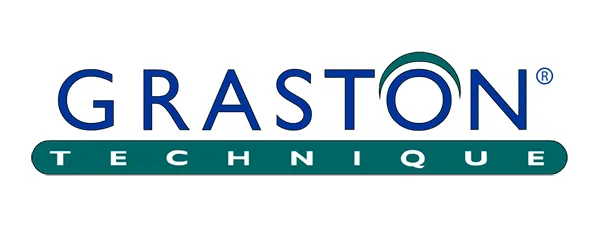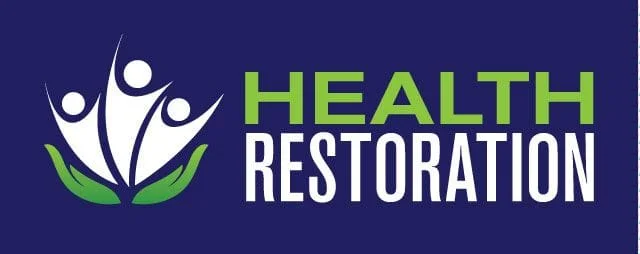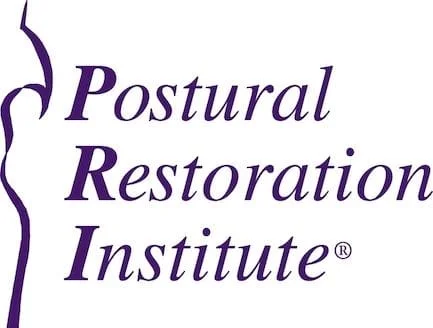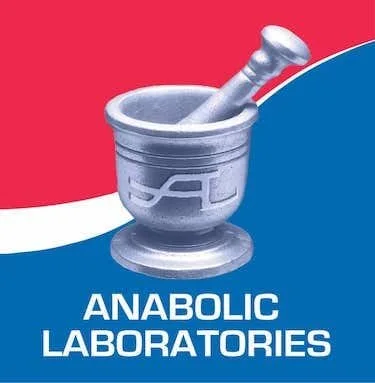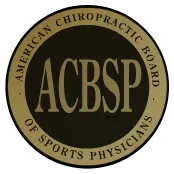by K.D. Christensen DC, CCSP, DACRB
While the value of establishing proper strength and balance in the trunk muscles (the “core stabilizers”) when treating or preventing spinal problems is obvious, the hip muscles are often overlooked. The hip joint is intrinsically stable due to its construction as a ball in a deep socket, and is further enhanced by a very thick joint capsule reinforced by strong spiral ligaments. (1) Then there are the several powerful groups of muscles that surround this joint. The hip muscles form a vital link in the lower extremity kinetic chain — transferring ground-reaction forces from the legs to the trunk during gait. These important muscle groups supply coordinated propulsion, and at the same time must provide balanced stability for the pelvis and spine. Through repetitive use patterns and after injuries, it is not unusual for some of these muscles to develop shortening and/or weakness. A comprehensive program must include exercises to address these imbalances.
Surprisingly, an appropriate and successful exercise program to rebalance the hip muscles does not require expensive, joint-specific equipment. In fact, the low-tech approach can be very effective for the treatment of most hip and pelvic conditions. With a few simple stretches (properly performed) and some home resistance exercises, the hip muscles can be easily strengthened and rebalanced. (See Examples)
The Hip Rotators and the Pelvis
The role of the hip rotator muscles (Table 1) is frequently overlooked when addressing prevention and rehabilitation of lumbar spine injuries. Deconditioned and/or shortened hip rotators will contribute to abnormal lumbopelvic posture and cause compensatory motion in the lumbar spine during daily activities. (2) This becomes particularly important during strenuous and competitive athletic efforts. The detrimental effects of inadequately conditioned and prepared hip rotators predisposes the athlete to lumbar spine injuries (3), many of which are eventually seen by the sports-oriented doctor of chiropractic.
Flexibility and strength deficits in the hip rotators can add substantial stress to the pelvis and sacroiliac joint, as well as the lumbar and even thoracic spinal regions. (4) For instance, there may be an anteverted (forward flexed) pelvis in conjunction with limited external hip rotation. In such cases, a combination of stretching and strengthening will be necessary for a complete response to chiropractic care. The chiropractic correction of the flexed pelvis will help to provide greater external hip rotation. On the other hand, if the flexed pelvis is secondary to shortened hip rotator muscles, then corrective exercises to increase the range of motion of the hip internal rotators will be needed. This can be accomplished by stretching the shortened internal rotators and strengthening the antagonist external rotator muscles.
Stretching and Increasing Motion
Tightness of the external rotator muscles will limit internal rotation of the hip, while shortening of the internal rotators decreases external hip rotation. For some hip problems, improving the flexibility of short and tight muscles is necessary. Frequent, gentle, and sustained stretching of either the internal or external rotators should be demonstrated to the patient, who can usually start the stretching immediately, even in the early stages of chiropractic treatment.
Piriformis syndrome and iliotibial band syndrome are two hip conditions that will benefit from specific stretching exercises. In both of these, tight muscles contribute to an overuse condition that irritates sensitive tissues. Piriformis syndrome develops when a tight piriformis muscle inflames the sciatic nerve, causing posterior hip aching along with paresthesiae down the back of the leg, in the sciatic distribution. Since the piriformis is an external rotator of the hip, treatment must include inward rotation stretches for the piriformis muscle. Complete chiropractic care will also encompass corrections of subluxations and biomechanical faults of the pelvis, as well as predisposing factors such as an anatomically short leg and/or foot pronation. (5) Iliotibial band syndrome causes pain at the lateral aspect of the knee, where a tight iliotibial band rubs over the lateral aspect of the distal femur, causing a painful irritation, especially in runners. Correction of abnormal biomechanics such as leg length discrepancies must be part of the treatment, and foot orthotics may be needed. (6)
Resistance Strengthening
Weaker or injured muscles can be quickly strengthened with the use of isotonic resistance exercises. The resistance can come from a machine, from weights, from elastic tubing, or just using the weight of the body. Since the hip functions as part of a closed kinetic chain during most daily and sports activities, weight-bearing exercises, which require the co-contraction of accessory and stabilizing muscles, can be most effective. Open chain exercising (done with the foot and lower leg freely moving) is most helpful in the early stages of hip strengthening, to reduce the stress on the surrounding muscles after an injury. With athletes, exercise selection should also consider the sport-specific movement patterns. Kickers (such as soccer players and martial artists) can concentrate on open chain strengthening, while runner and golfers will benefit more from closed chain exercises.
Open chain exercises. Open chain exercising can be started very early with a symptomatic hip, since it doesn’t require the musculoskeletal structures to bear the weight of the body. The easiest method is to rotate the entire leg against the resistance of elastic tubing. Initial exercising should be done with a limited amount of movement — within a pain-free range of motion. These exercises are particularly useful for patients who have an injured rotator muscle, or even a “snapping hip.” Surprisingly, strengthening of the muscle and tendon involved in a snapping hip (such as the tensor fascia lata, iliopsoas, or biceps femoris muscles) is more useful than stretching for resolving the snapping. (7) Rehab for patients with any evidence of degenerative arthritis of the hip should also start with open chain exercising, since the joint is more safely exercised when the damaged cartilage is not bearing weight directly. As the patient progresses, additional resistance can safely be supplied with heavier tubing.
Closed chain exercises. Weight-bearing strengthening exercises, with the foot on the floor, should be included when an athlete is preparing to return to sports activities. Examples of closed chain exercises for the hip rotators include partial squats, lunges (especially to the side), and single-leg body rotations. Initially, body weight will be sufficient. Resistance can be gradually and progressively increased with the use of hand weights or elastic tubing. The particular benefit from closed chain exercises is their ability to re-train the co-contractions of accessory hip support muscles.
Functional Hip Alignment
A major underlying reason for developing an imbalance in the hip rotator muscles is an imbalance in weight-bearing alignment of the lower extremities. Alignment problems need to be addressed in order to prevent recurring hip muscle imbalances and eventual joint arthritis. Leg length discrepancies and foot pronation problems are frequently found in association with symptomatic muscle imbalances such as iliotibial band syndrome, and piriformis syndrome. A study by Ora Friberg, MD has found that osteoarthritis is much more common in the hip joint of a longer leg. (8) Recurrent muscle strains (especially hamstring and groin pulls) can be an indicator of asymmetry in structural alignment. The use of custom-fitted orthotics and/or heel lifts is often necessary in order to establish long-term balance in the hip muscles.
Outcomes Assessment
In order to assess the effectiveness of a hip treatment plan, both objective and subjective data on patient results on outcomes must be collected and documented. The data typically focus upon the physical changes noted at the time of consultation and in subsequent visits. Ongoing outcome assessment data utilizing the Hip Rating Questionnaire with comparative graphs over treatment time (available at www.outcomesassessment.org) documents the longterm results and effectiveness of the rehab procedures.
Conclusion
Early in their treatment, patients with hip complaints and sports injuries should be started on appropriate and progressive rehabilitative programs that include muscle stretching and strengthening. (9) These rehab techniques are easy and accessible, since they do not require expensive equipment or great time commitments. It isn’t difficult to select the best exercise approach for each patient’s hip problem. A home exercise program which is closely monitored allows the doctor of chiropractic to provide rehabilitative care which is cost efficient and effective.
Muscle alignment problems are frequently found in association with chronic and/or recurring hip imbalances. Therefore, patients must be screened for excessive leg length discrepancies and/or pronation. If these complicating factors are not recognized, the result will be frustrated patients who don’t respond to the balancing exercises, or who develop symptoms that vary in location due to the effects of the underlying biomechanical stress. Proper alignment of the lower extremities will lead to muscles that are strengthened and lengthened, and hip joints that work smoothly. Patients will be then be able to enjoy improved sports performance, as well as better mobility during daily activities.
Table 1.
| External Rotators | Internal Rotators |
| Psoas Major | Gluteus Minimus |
| Iliacus | Gluteus Medius (anterior) |
| Sartorius | Tensor Fascia Lata |
| Gluteus Maximus | Adductor Longus |
| Piriformis | Adductor Brevis |
| Quadriceps Femoris | Semimembranosus |
| Gemellus superior and inferior | Semitendinosus |
| Obturator externus and internus | |
| Gluteus Medius (posterior) |
ROTATOR MUSCLES OF THE HIP JOINT (4)
References
1. Hertling D, Kessler RM. Management of Common Musculoskeletal Disorders (2nd ed.). Philadelphia: JB Lippincott, 1990:280.
2. Hruska R. Pelvic stability: influences of lower extremity kinematics. Biomechanics 1998; 5:23-29.
3. Regan DP. Implications of hip rotators in lumbar spine injuries. Strength Cond J 2000; 22(6):7-13.
4. Ninos J. A chain reaction: the hip rotators. Strength Cond J 2001; 23(2):26-27.
5. Souza TA. Differential Diagnosis for the Chiropractor: Protocols and Algorithms. Gaithersburg, MD: Aspen Publishers, 1998:134.
6. Subotnick SI. Sports Medicine of the Lower Extremity. New York: Churchill Livingstone, 1989:312.
7. Souza TA. Differential Diagnosis for the Chiropractor: Protocols and Algorithms. Gaithersburg, MD: Aspen Publishers, 1998:265.
8. Friberg O. Clinical symptoms and biomechanics of lumbar spine and hip joint in leg length inequality. Spine 1983; 8:643-645.
9. Heiser JR. Rehabilitation of lower extremity athletic injuries. Contemp Podiat Phys 1992; Aug:20-27.
About The Author
Kim D. Christensen, DC, CCSP, DACRB, is codirector of the SportsMedicine & Rehab Clinics of Washington, and current president of the American Chiropractic Association Rehab Council. He can be reached at Chiropractic Rehabilitation Association, 18604 NW 64th Avenue, Ridgefield, WA 98642 or via email: [email protected].
Related posts:
Rehabilitation of the Hip
Hip Extension and Abduction Dysfunction














